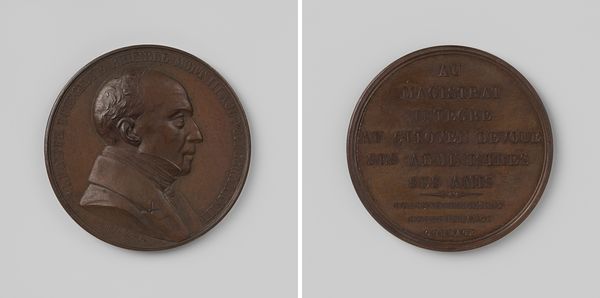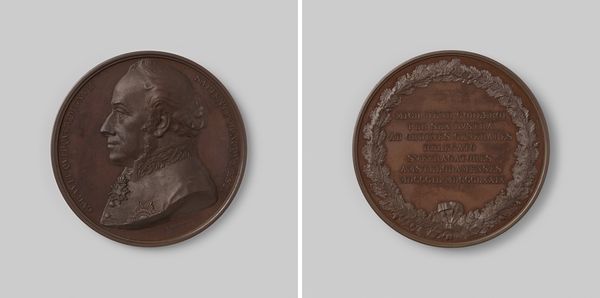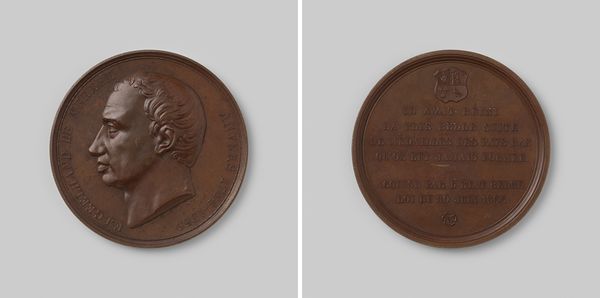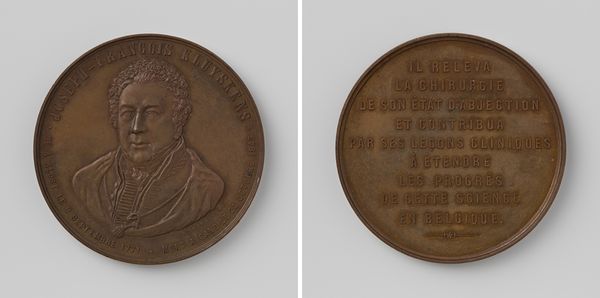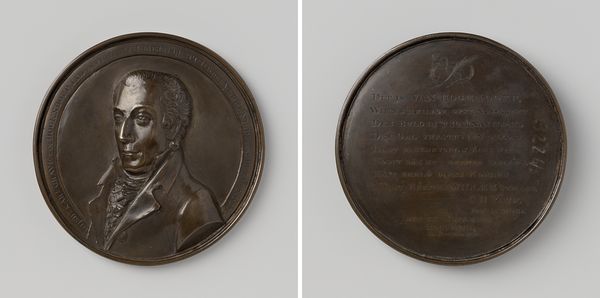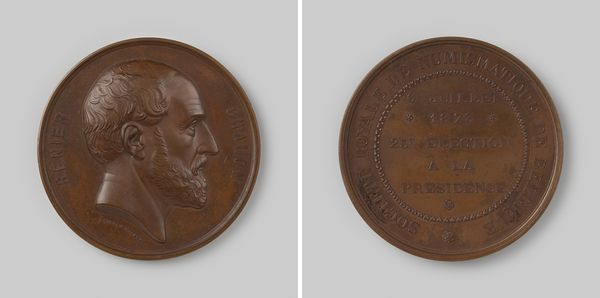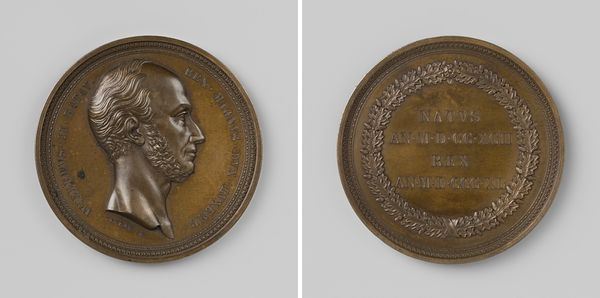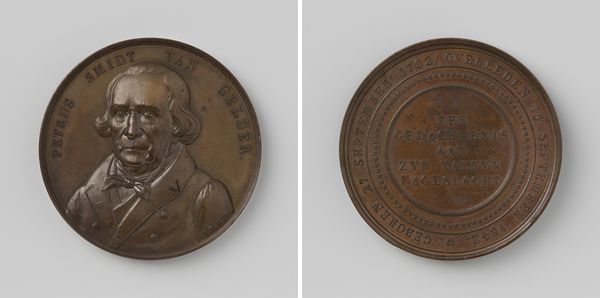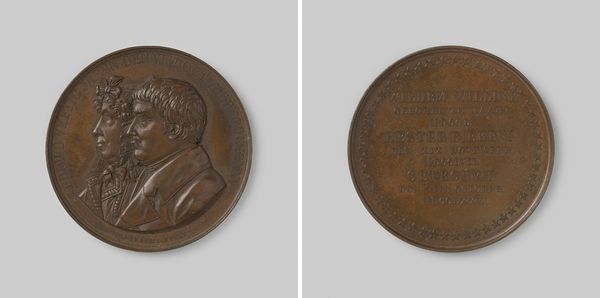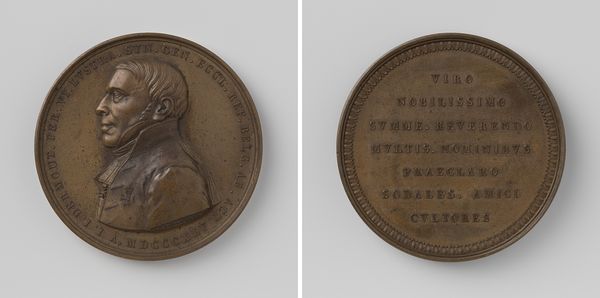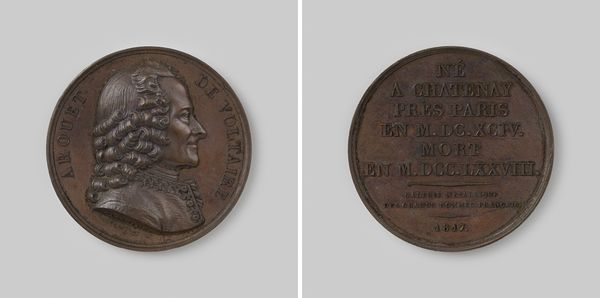
Bezoek van Koning Willem III aan 's Rijks Munt te Utrecht 1853 1853
0:00
0:00
davidvander18041879kellen
Rijksmuseum
metal, relief, bronze, sculpture, engraving
#
portrait
#
16_19th-century
#
metal
#
sculpture
#
relief
#
bronze
#
sculptural image
#
sculpture
#
engraving
#
realism
Dimensions: diameter 3.7 cm, weight 26.67 gr
Copyright: Rijks Museum: Open Domain
Editor: Here we have a bronze relief, a commemorative medal really, titled "Bezoek van Koning Willem III aan 's Rijks Munt te Utrecht 1853," which translates to "King Willem III's Visit to the National Mint in Utrecht, 1853." It's by David van der Kellen. There’s something so…stately and official about it. Almost like a passport photo etched in metal. What's your read on this piece? Curator: Ah, yes, these commemorative medals…little portals into moments deemed significant enough to immortalize! It’s interesting, isn't it, how something so… solid attempts to capture something so fleeting: a royal visit. It speaks volumes, doesn't it, about the relationship between power, industry, and public image in that era. Do you think the artist captured more than just a likeness of the King? Editor: Well, I notice that the King’s portrait takes up the entire left side, while on the other, text carefully details his visit. He does look like quite a stern fellow; it’s difficult to get much of a sense of his personality here. Curator: True, stern and perhaps a touch…unyielding? Remember, portraiture of leaders isn't always about pure representation; often, it’s about crafting an image, projecting authority and stability. And the fact it's bronze...bronze lends an air of permanence, of unshakeable presence. How does that compare to a modern-day photograph or newsreel? Editor: I guess a photo could be altered so much easier. And the news… gone as quickly as it arrives! This is meant to *last.* So, would this have been something the King himself commissioned, or a civic offering perhaps? Curator: Almost certainly commissioned, or at the very least, approved by the Royal court. Each detail carefully considered for maximum impact. Medals like these served to cement the King's image in the public consciousness, but they were also given out as gifts or rewards! Something tangible and shiny that reminds of royal power. Editor: Fascinating. I’d never really considered the propaganda element before! So much more to it than just a historical record. Curator: Precisely. Art never exists in a vacuum, does it? Reflecting and shaping perspectives; isn't that marvelous? It's like holding a conversation with the past, even through something as seemingly simple as a bronze disc.
Comments
No comments
Be the first to comment and join the conversation on the ultimate creative platform.


